Introduction

The word
soupis said to have evolved from the word sop, which referred to using pieces ofbread to soak up juices from meat. Historians agree that the thirteenth centurywas when soup making became an art form. Soup isconsidered to be as old as cooking itself. Soup crossed over class and wasconsumed by rich and poor. Simple ingredients made soup easy to digest by thosewhom were ill as well as healthy. Each cultureadopted their own variation of soup that was made with ingredients on hand.
Forexample, Spanish gazpacho, Russian borscht, Italian minestrone, French bisquebut the basics of soup making remained the same. Traditionally,soups were classified into two main categories clear soups and thick soups. The Frenchclassification of clear soups included bouillon, defined as broth and consomm. Thick soupshave traditionally been categorized based on the type of thickening agent used.For example, purees have traditionally been categorized as vegetable soupsthickened with starch such as corn starch or potatoes. Bisques originated inFrance and generally included pureed crustaceans. Cream soups, like the nameimplies are typically vegetable soups thickened with cream.
However, creamsoups have also been thickened with a white sauce known as a Bchamel sauce ora velout sauce, which is French for velvet sauce. Soups arerelated to stews and the basic difference between the two is that soups containmore liquid, relative to that of stews. In 1882, Mrs.Emma P Ewing wrote, in her book Soup and Soup Making, the following: Soupscientifically prepared is easier of digestion than almost any other article ofdiet. The solid matter which enters into its composition and would in theoriginal form require several hours for digestion, is so broken down in theprocess of preparation that it can be readily assimilated with very littleexpenditure of vital force; and being absorbed by the stomach as soon as eaten,goes immediately to nourish the system. Mrs. Emma PEwing further wrote: But soupto fulfill its true mission must be attractive in appearance, agreeable inflavor and unmistakable in character. It must not be a weak, sloppy,characterless compound, nor a greasy, crude, inharmonious hodge-podge.
Thedefects of unsavory, unpalatable, indigestible soups may be concealed, butcannot be removed by the excessive use of salt, pepper and other spices andcondiments. And in order that soup of any kind may legitimately aspire to highrank, either as a nutritive or hygienic agent, it must be skillfully prepared,so as to please the eye and gratify the palate. Having said allthat, this book focuses on nutritious and delicious soup recipes that have eitherevolved over time or are recently new.
A Word on Salt
WhiteTable Salt White table salt, commerciallyavailable everywhere in convenience and grocery stores, has been completelystripped of any nutritional benefit during processing. Typical table salt iscomprised of 97.5% sodium chloride and 2.5% synthetic chemicals. The product isbleached, cleaned with chemicals followed by heating at extremely hightemperatures. Excessive heat effectively alters the chemical structure anddestroys essential minerals and amino acids.
The iodine added is syntheticallymade using by-products of the petro-chemical industry. Our bodies have a verydifficult time digesting anything that is not natural. A reduced sodium dietinvolves reducing this bad salt, otherwise known as white table salt, from yourdiet. Sea Salt Sea saltproducers are turning to a refining process that closely resembles that oftable salt, making sea salt not very good as an alternative to white tablesalt. HimalayanPink Salt Himalayan pink salt (HPS) is one ofthe few varieties of salts that have remained pure and stable in nature. HPScontains a large amount of essential minerals and amino acids which combine topromote/provide a number of health benefits including sinus health, bonestrength, more energy, improved immune function, regulated sleep, increasedlibido, reduced signs of aging and more.
HPS also has the ability ofdetoxifying the body of heavy metals. HPS contains the same 84 traceminerals and elements that are found in our bodies. The minerals exist incolloidal form, making them easy to absorb by our cells. HPS also has lesssodium per serving relative to the highly processed white table salt.
Soup Stock

A stock pot is a kitchen necessity.A stock pot that is tall and narrow will help to reduce evaporation and waterloss. Stock made from meat bones benefit from long and slow simmering and cantake anywhere from three to five hours.
Vegetable stock, on the other hand,should only take around 30 minutes to one hour. Since certain herbs andvegetables can turn bitter the longer they steep, it is important to strain thestock as soon as it is finished. It is recommended to avoid certainvegetables when making stock. The vegetables to exclude in stock making areones from the cabbage family or cruciferous vegetables such as turnips, Brusselsprouts, broccoli, cauliflower, rutabagas, cabbage, bok choy, etc. In addition,powdered herbs also do not do well in stock making. Whole peppercorns, juniperberries and whole bay leaves are recommended for stock making as these are easyto remove once the stock is finished.
Many people believe that stock andbroth are the same. Although they both start out the same, broths are seasonedwith salt and other spices and can then be served. In contrast, stocks areactually unsalted and unseasoned liquid that make a fabulous neutral base forsoups, sauces and other culinary creations. To that end, you will notice thatthe following stock recipes do not include any salt. In order to extract as muchvitamins from the meat bones, add up to a teaspoon (tsp) of apple cider vinegarto your stock. This will help to extract the calcium and other nutrients fromthe bones being used.
To change the stock to a broth,simply add seasoning according to taste and serve topped with fresh choppedchives.
ChickenStock Instead of a whole chicken,substitute 4 lbs. of any chicken part/parts
Ingredients: 4 lbs chicken, pasture raised 8 cups cold filtered water 1 large onion, halved 3 stalks celery, quartered 3 carrots, quartered 1 bay leaf 3 peppercorns
Optional: 1 tsp apple cider vinegar 2 whole juniper berries 1 tsp gratedfresh ginger
Method: Place chicken in crock pot andcover with cold water. Bring to a boil and then reduceheat to low and allow to simmer for one hour. Remove chicken from pot and allowto cool, retaining the water in the pot. Once chicken is cool enough tohandle, remove the skin and bones from the meat.
Put meat in refrigerator, discardskin and return bones to stock pot Add the onion, celery, carrots, bayleaf, peppercorns, ginger and juniper berries, if using. Add more water ifnecessary and bring the stock to a boil on high. Reduce heat to low and simmer forthree to five hours. Strain the stock, discarding thesolid ingredients. Put stock in the refrigeratorovernight to allow fat to rise to the top. Once fat has risen to the top, skimfat and discard.
Your stock can be divided andfrozen or used immediately to make a broth or soup.
BeefStock Ingredients: 4-5 lbs. beef bones, pasture raised 2 onions, peeled and halved 4 garlic cloves, peeled 2 carrots, quartered 2 celery sticks, quartered 2 bay leaves 3-5 whole peppercorns 3 whole juniper berries Herb bouquet(tie a selection of fresh herbs together such as thyme and parsley)

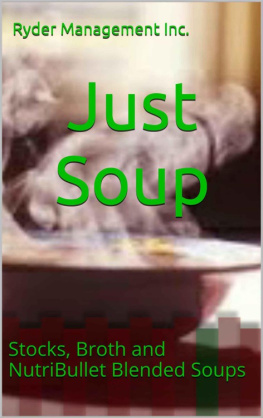
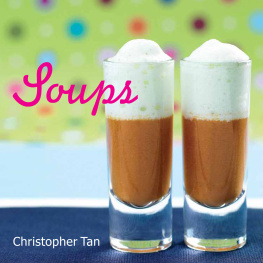

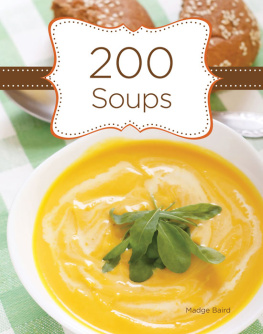
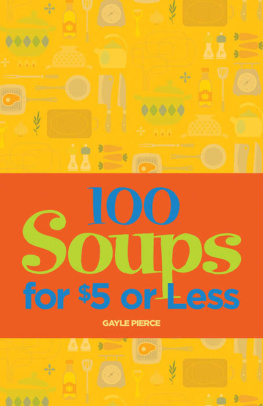
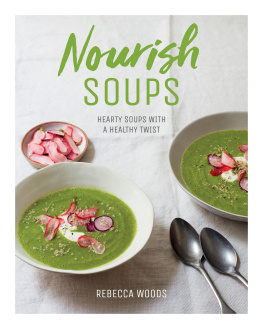
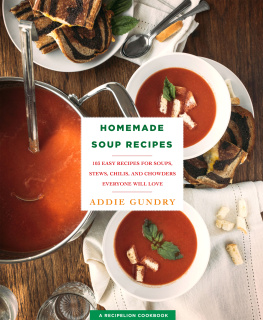
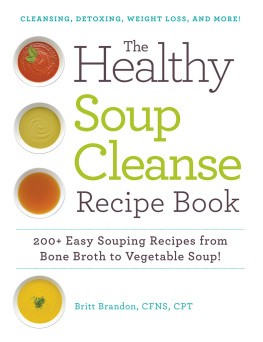
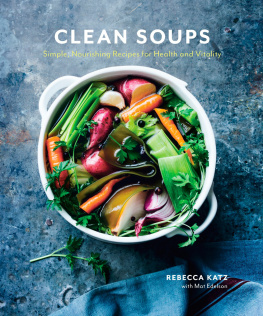

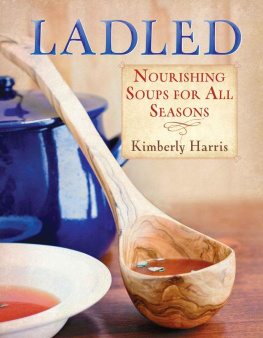

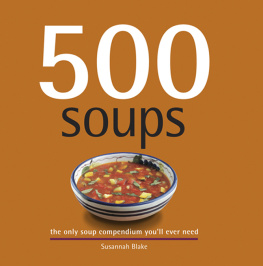
 The word soupis said to have evolved from the word sop, which referred to using pieces ofbread to soak up juices from meat. Historians agree that the thirteenth centurywas when soup making became an art form. Soup isconsidered to be as old as cooking itself. Soup crossed over class and wasconsumed by rich and poor. Simple ingredients made soup easy to digest by thosewhom were ill as well as healthy. Each cultureadopted their own variation of soup that was made with ingredients on hand.
The word soupis said to have evolved from the word sop, which referred to using pieces ofbread to soak up juices from meat. Historians agree that the thirteenth centurywas when soup making became an art form. Soup isconsidered to be as old as cooking itself. Soup crossed over class and wasconsumed by rich and poor. Simple ingredients made soup easy to digest by thosewhom were ill as well as healthy. Each cultureadopted their own variation of soup that was made with ingredients on hand.  A stock pot is a kitchen necessity.A stock pot that is tall and narrow will help to reduce evaporation and waterloss. Stock made from meat bones benefit from long and slow simmering and cantake anywhere from three to five hours.
A stock pot is a kitchen necessity.A stock pot that is tall and narrow will help to reduce evaporation and waterloss. Stock made from meat bones benefit from long and slow simmering and cantake anywhere from three to five hours.